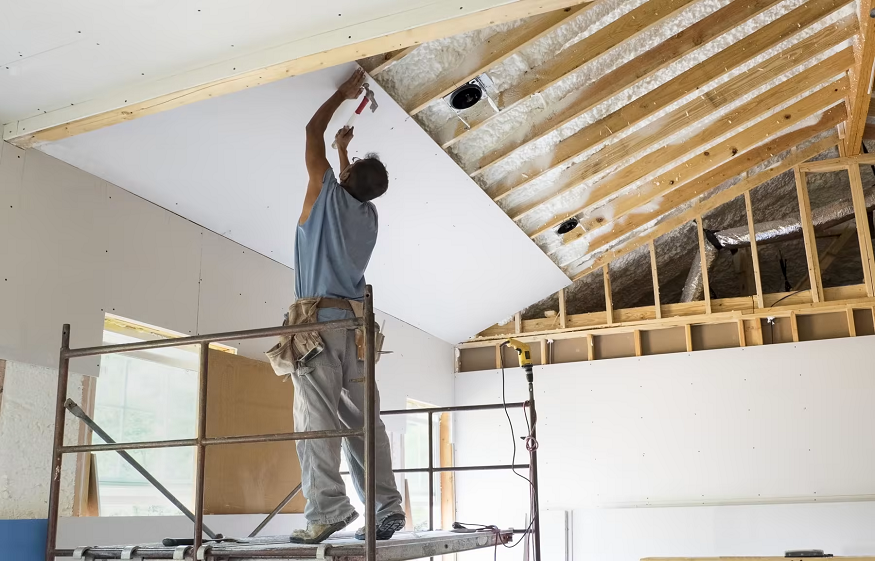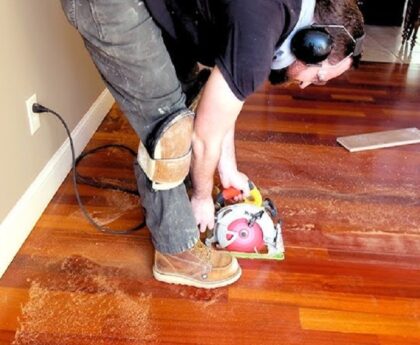Drywall installation and repair can be a daunting task for even the most experienced DIY enthusiasts. However, with the right techniques and tools, you can achieve professional-looking results. In this comprehensive guide, we will explore a compilation of top tips for working with drywall, covering everything from filling big holes to hanging drywall vertically.
Whether you’re a seasoned pro or a novice, these tips will make your next drywall project easier and more efficient.
1. Use Setting Compound for Big Holes
When it comes to filling dime-sized and larger drywall repairs, using a joint compound that sets up by a chemical reaction is essential. These setting compounds, available in powder form, have varying setting times ranging from five to 90 minutes. The compound hardens in the specified time after mixing it with water.
Opting for the five-minute version is convenient as it comes in a 5-lb. box and hardens quickly, allowing you to apply another coat right away. However, keep in mind that setting-type compounds are harder to sand than regular patching materials. Therefore, it’s crucial to strike them off flush to the surface when filling the hole. You can find setting-type compounds at stores that sell drywall taping supplies.
2. Make a Dent for the Patching Compound
Covering small wall dings or nail holes with patching compound is relatively easy. However, when removing a nail, drywall anchor, or picture hanger, there is often a ridge of old paint or drywall sticking out that is challenging to cover with patching material. To overcome this issue, make a dent over the hole before filling it.
Several tools can help you create the dent, such as the rounded end of a putty knife handle or the handle of a screwdriver or utility knife. Press the handle against the hole and twist it slightly while applying pressure to dent the surface. Alternatively, you can use your selected tool like a hammer if you have good aim.
3. Cover Cracks with Repair Spray
Stress cracks around window and door openings are common due to framing movement. Fixing these cracks permanently can be challenging, but using spray-on crack repair is an effective way to extend the life of your repair. The spray forms a flexible membrane over the crack, allowing it to stretch and relax as the building moves.
Before using the crack-repair spray, fill any open cracks with patching compound. Follow the instructions on the can to cover the crack with the crack-repair spray. Once it dries, finish the repair by painting over it. Crack-repair spray can be found at hardware stores, paint stores, or online.
4. Rent a Drywall Lift for Ceiling Work
If you’re tackling a ceiling drywall installation, consider renting a drywall lift. The convenience and ease of use make it well worth the daily rental fee. A drywall lift breaks down into three parts, making it easy to transport in a midsize car. Before starting, ensure that the lift is in good working condition by assembling it and testing its functionality.
To use the lift, hoist one end of the drywall sheet up to the support hook with the finish side down. Then, lift the other end of the sheet and slide it onto the second hook. Lift the drywall slowly and smoothly, avoiding abrupt or jerky movements that may cause the drywall to pop off the hook. Once the drywall is in position, lock it down and fine-tune the placement. Finally, secure the drywall by adding screws before lowering the lift.
5. Eliminate as Many Drywall Butt Joints as You Can
Butt joints, where two non-tapered ends of drywall meet, can be challenging to hide and finish properly. To avoid the hassle of dealing with butt joints, try to use drywall sheets long enough to cover entire walls and ceilings. This way, you’ll only have tapered joints to finish, which is much easier and less time-consuming.
Drywall sheets are commonly available in 8- and 12-ft. lengths, but specialty suppliers carry 14-ft. sheets. If your ceiling is longer than 14 ft., it may be impossible to avoid butt joints. However, on walls exceeding 14 ft., you can hang the sheets vertically instead of horizontally. Although hanging drywall vertically is slower, it allows for multiple tapered joints to cover without any butt joints. Ensure that the tapered edges fall at the centers of studs for proper installation





